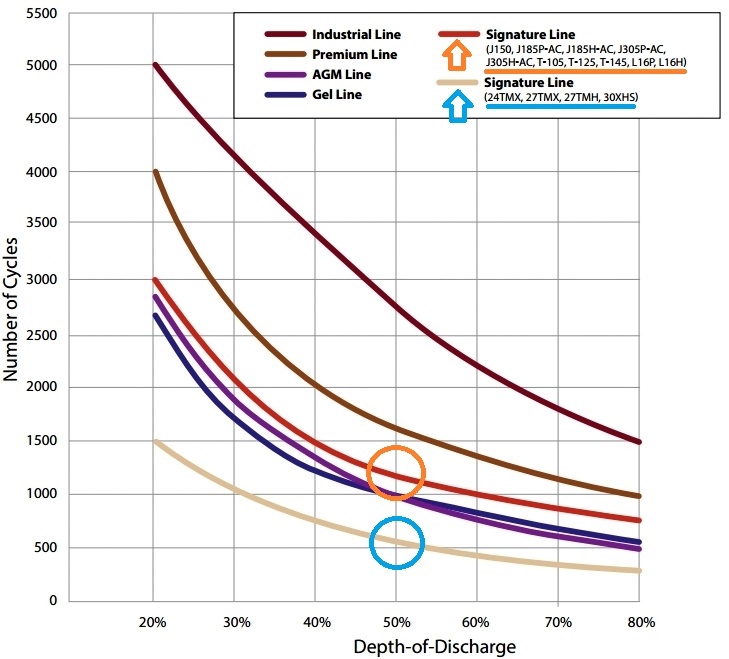I am putting together a couple solar systems for my cabins. I started a thread about my setup in another part of the forum, but my thoughts keep coming back to the cost of the batteries.
I know, everyone agrees that you're better off to buy quality batteries with a large capacity, but I am only going to actually want to use the battery bank a handful of times per year.
Sooooooo.... I know if you run a 80% DOD on your batteries you'll get about half as many cycles out of the batteries, but if i'm only going to put 50-100 proper discharge cycles on the batteries over the next 5 years (occasional weekend visits to the cabin), where is the balance with cost benefit? How will the batteries' natural aging play in? Will my 10 year cost be any different if I I half the size of my bank and run it harder, vs keeping the size larger and being gentler on it?
I know, everyone agrees that you're better off to buy quality batteries with a large capacity, but I am only going to actually want to use the battery bank a handful of times per year.
Sooooooo.... I know if you run a 80% DOD on your batteries you'll get about half as many cycles out of the batteries, but if i'm only going to put 50-100 proper discharge cycles on the batteries over the next 5 years (occasional weekend visits to the cabin), where is the balance with cost benefit? How will the batteries' natural aging play in? Will my 10 year cost be any different if I I half the size of my bank and run it harder, vs keeping the size larger and being gentler on it?

Comment